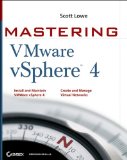 VMWare ESX vs. VMWare ESXi
VMWare ESX vs. VMWare ESXi
The VMWare ESX and ESXi are two bare-metal hypervisors, meaning that they can be used without an operating system. The ESX is the older of the two and, therefore, is of a more mature technology compared to the ESXi. The most significant difference between the ESX and ESXi is the lack of the linux kernel in the ESXi.
Although the VMWare ESX does not need an operating system, it still uses a Linux kernel, of which ESX launches, along with a few other features. The removal of the Linux kernel consequentially affects a lot of the characteristics of the VMWare ESXi. It reduced the on-disk footprint of the software from the hefty 2GB of the ESX to the very minute 32MB of the ESXi. Due to the much smaller footprint of the ESXi, manufacturers like Dell, often sell it packaged and embedded in their hardware via flash chips. This is a bit more difficult to do with the hefty size of the VMWare ESX. The ESXi also performs better compared to the ESX, as the smaller footprint means faster loading times and better overall performance.
The removal of the Linux kernel reduces the number of patches that are needed by the server. The bigger part of the patches that needs to be applied deals with the underlying Linux kernel, and not on the ESX core itself, which is why the number of patches are reduced. Fewer patches also mean that the system will not have to be rebooted too often.
The feature that most ESX users will probably miss, when using the ESXi, is the lack of a console, which a lot of users are already used to. This console also provides some of the tools that are used in managing the hypervisor. Since the ESXi lacks this console, it moves the management interaction to a set of remote management tools. Although most users might not appreciate this change, it further simplifies the use of ESXi for beginners.
Summary:
1. The VMWare ESXi does not have the Linux kernel that is used by the VMWare ESX.
2. The ESXi has a much smaller disk footprint compared to the ESX.
3. The ESXi is often sold as a built-in hypervisor, unlike the the ESX.
4. The ESXi requires much fewer updates compared to the ESX.
5. The ESXi lacks the console that most ESX users are used to.
- Difference Between Sony Cybershot S Series and W Series - December 22, 2012
- Difference Between Samsung Galaxy S3 and iPhone 5 - December 21, 2012
- Difference Between Samsung Galaxy S2 (Galaxy S II) and Galaxy S 4G - December 20, 2012

Nice Article..Thanks
Reply
very informative article
Reply